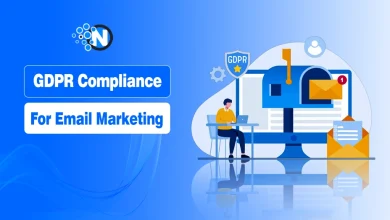How to Improve the Deliverability of Your Ecommerce Newsletter
Poor email deliverability is the classic roadblock between you and your audience. If you are also struggling to get your ecommerce newsletters into your subscribers’ inboxes? Email deliverability can make or break your marketing campaigns.
Improving this deliverability for ecommerce newsletter is even more important since these emails are supposed to improve the conversion rate. In this article, I am going to explain how you can improve the deliverability of your newsletters. Let’s start.
What is Email Deliverability?
Email deliverability is the ability to send an email that arrives in the inbox of its recipient without any issue. This is what guarantees the success of your email campaigns.
The deliverability rate measures only the percentage of sent emails that reach the recipient’s primary inbox, excluding those that land in spam.
However, the path traveled by email before reaching its recipient is strewn with pitfalls. These include going through anti-spam filters, checking that the sender’s email address is not blocklisted, etc. So, improving deliverability is important to overcome such obstacles.
Is Your Email Deliverability OK?
Here’s a quick recap of what you need to watch out for to maintain a good email delivery rate:
- Email contacts of recipients: You should have collected them yourself by asking for explicit permission to be contacted. If you did it with a double opt-in, even better.
- Low abandonment rate: the percentage of people who unsubscribe from your emails or newsletters.
- Good open rate: According to Campaign Monitor, the percentage of emails opened out of the total emails sent in a single send should be between 15 and 25%.
- Low bounce rate: As mentioned before, no more than 2%.
Monitoring these indicators will allow you to analyze why your emails seem to be blocked.
Some Common Email Deliverability Issues
Several things can go wrong with an email’s deliverability; here are a few of the most typical ones.
- Spam Filters: Spam filters analyze your email’s content, sender reputation, and engagement levels. If your email looks spammy, it won’t reach the inbox.
- Hard and Soft Bounces: Hard bounces occur when emails are permanently undeliverable, while soft bounces result from temporary issues like a full inbox. Both can hurt your sender’s reputation.
- Blacklisted Domains: If your domain gets blacklisted, your emails may never reach their recipients. This usually happens due to spam complaints or bulk emails being sent without proper permissions.
How to Improve Ecommerce Newsletter Deliverability?
You need to follow a few things in order to improve the ecommerce newsletter deliverability. Here are their details:
1. Personalize Your Emails on a High Level
Personalizing your emails on a high level is important for increased deliverability. Personalization involves creating messages that are specifically designed according to the selected segment of the audience.
Big companies divide their audience into different sections and then send emails to them separately. A personalized email has a better chance of falling into the inbox of the senders. For better personalization, you can do things like adding the recipient’s name in the subject line. Another thing you can do is keep on mentioning this name throughout the message for a better delivery.
2. Write Non-Spammy Subject Lines
Your email will be interpreted as spam if it has a spammy appearance or has higher spam score. The subject line is most important in this case, besides the sender’s address. Avoid utilizing excessive capitalization, exclamation points, or other special characters.
Personalization is a good method to produce credible topic lines. Additionally, follow the guidelines for good copywriting by summarizing the email’s content quickly and concisely and refraining from making empty promises.
3. Make It Easy to Unsubscribe
Allowing your email subscribers to alter their minds is not just excellent form, but it’s also required by law. There should be choices available for users to change their email preferences or unsubscribe from your created newsletter. The opt-out process should simply take one click. However, the user is also given the choice to rejoin the email list, with several options for how frequently to hear from them.
Your goal as the sender should be to raise engagement rates. If someone doesn’t want to be on your list, don’t try to deceive them into staying there – it won’t help you.
4. Build a Manual Email List:
Many businesses try the quick way and purchase pre-built email address lists in order to start marketing. However, in the case of ecommerce marketing, using a purchased email list might not be a good idea.
Instead, you should focus on building the list manually. It is a time-consuming process but can be helpful in the long run. A manually built list includes those people who actually want to connect with your brand. Targeting such an audience gives a better chance of improving the deliverability of the newsletters which will result in a higher conversion rate.
5. Monitor and Adapt:
Monitoring the performance of your ecommerce newsletter is extremely important. Without monitoring, you cannot have an idea whether or not the emails are working. You should determine some specific KPIs and judge the performance according to them. See if the emails are bringing in more conversions and leads over time.
If things aren’t going the way you want them to, try adapting to the situation. Create new techniques and write a different type of message. Keep on doing this long enough and you’ll start seeing improvement in the deliverability of the newsletters.
Summing Up
To improve your deliverability, make sure you send emails with the right information to the right recipients at the right time and with an acceptable frequency. In the case of ecommerce newsletter, following some specific guidelines is important for increased deliverability.
These guidelines revolve around better personalization, decent headlines, and manual subscriber list building. Employ these techniques in your campaign and improve the deliverability in no time.
Frequently Asked Questions (FAQs):
Without good deliverability, you cannot expect to have more leads and customers.
Are there any tools that check an email deliverability rate?
Yes, there are several tools like GlockApp that are available for this purpose.
Does sender reputation affect deliverability?
Yes, sender’s reputation affects deliverability as well.




